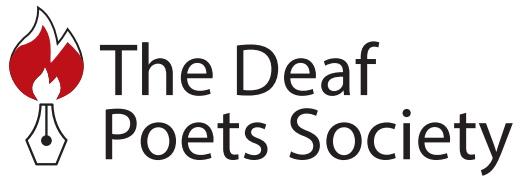T.K. Dalton
Editor's Note
This issue’s Ideas pieces continue where our first issue left off: thoughtful criticism in the form of two reviews of new books by disabled writers of poetry and prose. One review comes from an established critic whose work in YA disability literature is pacesetting; the other piece, we are proud to say, is the writer’s first publication credit.
Kayla Whaley, reviews Susannah Nevison’s debut collection, Teratology. In her review, Whaley writes:
The wild is not some stain that can or should be bleached from Nevison’s body; it, and all its attendant complexity, is an integral part of her whole. Sometimes, her animality is explicitly claimed (“by turns brute and bird”). Other times, it’s an association, a shared kinship, as with the stillborn foal that appears in several poems. Often, her animalistic traits were assigned to her by others—born “tied like a calf / legs knotted for stumble” and with “daughter fins, fish for a flower, cold reptilian / blue”—but she embraces them, even when it’s painful, maybe especially then. And while she never shies from the harsher realities of her body, she is just as forthright about the beauty and power she houses, too. In fact, both are often true at once (“…It’s possible to love / what lays me to waste”)
Emily Schwartz, the first-time critic who has logged many hours as a reporter and editor at student newspapers connected to her school for the Deaf, puts this community knowledge to work in her review Deafness Gain. The memoir by Michael Uniacke follows up where Deafness Down left off: with an Australian Deaf man looking to find his place between Deaf and hearing worlds. In her review Schwartz describes a scene in which young Michael, who has grown up with minimal exposure to signing, attends a Christmas party attended mostly by signers:
Despite not knowing sign language beyond a basic grasp with the alphabet, it began to lose its strangeness at the Christmas party. And so there is a shift of normalcy throughout Deafness Gain, from seeing sign language as a “waving flapping incomprehensible thing” made by people in the lower rungs of society, to feeling more at home in “this rich and exotic land of deafness."
The nuance these two writers bring to their reviews stems partly from their lived experiences. Reviews by critics with disabilities written about titles of new poetry and prose that aspire to include our portrayals are the lifeblood of this section. Several books under review for future issues came to us from readers, so please: if you are a writer with a disability or you know of a writer with a disability who has poetry, prose, artwork, theater, or anything in between coming out soon, please send us an email or a message on Facebook or Twitter.
Of course, what keeps us from calling Ideas the more humble Reviews is work of the “anything in between” variety, like Janet Morrow’s fashion review/photo essay/art history primer/travelogue, “Elevate: A DisArt Fashion Show.“ That she managed to produce this while editing, along with MANDEM, our extensive art section is all the more impressive. Here, she describes the accessibility set-up awaiting her: "We saw the formidable ramps right away. They rose, they swooped, they soared – as tall as 25 feet in some places. At the same time, there was a weighty feeling of sturdy permanence to them. The buildings they connected were old, decayed, seemingly ready to fall down in a strong wind, but the ramps threaded through them like a strong spine supporting the whole." Remember, though; a picture says a thousand words. Don't miss this piece.
Ideas wouldn’t be anything, though, without people to spark them and stoke them. In this issue in particular, I have felt personally very lucky to be surrounded by such generous, resourceful, and reliable people. I feel especially fortunate to announce that Travis Chi Wing Lau, a poet whose work appears in this issue, and who is also a doctoral candidate in English at the University of Pennsylvania, will be joining our editorial team to work on the Ideas section. We’re thrilled to be working with him starting with Issue 3.
No magazine dedicated to expressing the social aspects of disability as an identity can do that work without a social network--not a social network in that empty way that it can sometimes be deployed, but in the manner recently seen in, of all places, a New York Times essay series on disability, which included some of the most accomplished disabled writers and poets alive.
This issue and every issue, Ideas aims to work in that tradition, in whatever small way we can, to be a node in a matrix of actual people on one side of one feed or another. It’s our hope that these words move our readers through whatever form necessary: the pixels glowing against an actual face; hands touching oversize keys; an attentive ear reaching for screenreader; a mind stretching, however it best does, for a new tool, a next way, a thing that can be made to work better for us.
